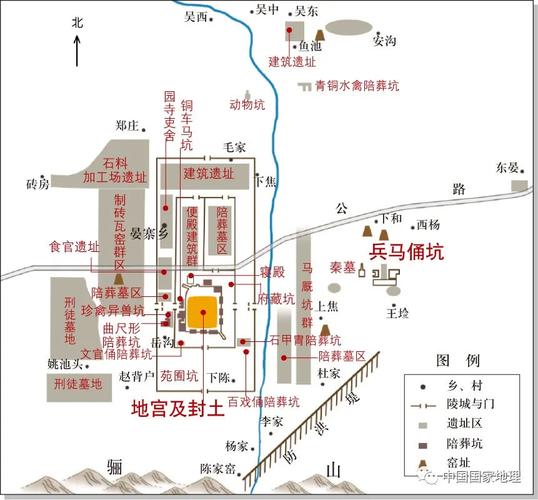
Where is the Mausoleum of the First Qin Emperor Located?
Located at the northern foot of Lishan Mountain, 35 kilometers northeast of Xi'an, Shaanxi Province, Qinshihuang Mausoleum is the tomb of Emperor Qinshihuang, founder of the first unified empire in Chinese history during the 3rd century BCE.
Location and Geography
The Mausoleum of the First Qin Emperor is situated in Lintong District, about 35 kilometers east of Xi'an City, Shaanxi Province. Nestled at the northern foot of Lishan Mountain and facing south towards the Wei River, the mausoleum enjoys a strategically advantageous location according to the principles of Feng Shui. This ancient Chinese practice emphasizes harmony between humans and the environment, and the mausoleum's positioning reflects the belief in harnessing auspicious natural forces.
History and Significance
Construction of the mausoleum commenced in 246 BCE, shortly after Emperor Qin Shi Huang ascended the throne at the age of 13. It took 38 years and the labor of over 700,000 workers to complete this colossal project. The Emperor's tomb complex was designed to be a microcosm of his vast empire, reflecting his power and ambition.
The significance of the Qinshihuang Mausoleum lies not only in its grandeur but also in what it represents. It stands as a testament to the first unified Chinese empire and the remarkable achievements of the Qin dynasty. The Terracotta Army, a vast collection of life-sized terracotta sculptures depicting the Emperor's army, is one of the most significant archaeological discoveries of the 20th century and a UNESCO World Heritage Site.
Layout and Structure
The mausoleum complex is vast, covering an area of 56.25 square kilometers. It comprises inner and outer city walls, with the burial mound located at the heart of the complex.
- The Burial Mound: This pyramid-shaped mound, though yet to be excavated, is believed to contain the Emperor's tomb chamber. Historical records describe it as lavishly decorated with precious stones, simulating the celestial constellations above and geographical features below.
- The Terracotta Army: Located about 1.5 kilometers east of the burial mound, the Terracotta Army pits house thousands of life-sized terracotta soldiers, horses, chariots, and weapons.
- Other Tombs and Pits: Archaeologists have discovered numerous other pits containing terracotta figures of officials, acrobats, musicians, and other figures that would have served the Emperor in the afterlife.
Exploration and Preservation
While the Terracotta Army pits have been excavated and are open to the public, the central burial mound remains unexcavated due to concerns about preserving its contents. Advanced technologies are being employed to study the tomb non-invasively and unravel its mysteries.
The Chinese government has taken extensive measures to protect and preserve the Qinshihuang Mausoleum. It is recognized as a UNESCO World Heritage Site and is subject to ongoing research and conservation efforts to ensure its preservation for future generations.
Q&A
1. Why wasn't the central burial mound excavated?
The central burial mound of Qin Shi Huang's Mausoleum remains unexcavated due to several factors. Primarily, concerns exist about adequately preserving the delicate artifacts and structure within the tomb given current technological limitations. Additionally, there are ethical considerations regarding disturbing the Emperor's final resting place.
2. What is the significance of the Terracotta Army?
The Terracotta Army is significant on multiple levels. Firstly, it is a breathtaking artistic achievement, showcasing the advanced craftsmanship of the Qin Dynasty. Secondly, it provides invaluable insights into the military organization, weaponry, and cultural practices of the Qin era. Lastly, it stands as a powerful symbol of Emperor Qin Shi Huang's ambition, power, and desire to command a vast army even in the afterlife.
3. Why is the Qinshihuang Mausoleum important today?
The Mausoleum of Qin Shi Huang holds immense historical and cultural value. It provides a tangible link to the Qin Dynasty, a pivotal period in Chinese history that witnessed the unification of China and the establishment of centralized rule. The ongoing archaeological work at the mausoleum continues to shed light on this significant era, enriching our understanding of ancient Chinese civilization and its contributions to the world.